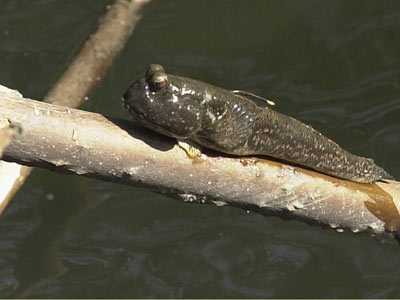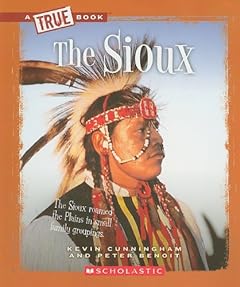We had a great time learning about fish (along with other animals native to NJ) this month.
We started our meeting at the library by discussing the characteristics of fish. With lots of discussion, we determined that fish:
-live in water – both fresh water and salt water
-have fins that they use to move through the water
-have gills instead of lungs
-have scales
-are cold-blooded
-lay eggs (mostly)
-eat bugs, smaller fish, and other small creatures
-not all fish have bones (sharks are among the cartilaginous fish)
-have a swim bladder that works like blow-up floaties to help the fish control their depth
We also discussed a little bit about the rules for fishing in NJ. A license is required if you are between 16 and 70, to fish in fresh water. No license is needed for salt water fishing. There are limits to the size and type of fish that can be kept.
We then played a true/false trivia game. The kids stood in a line. When I asked a question, they would give a thumbs-up if they thought it was true, and a thumbs-down if they thought it was false. I picked unusual facts and unusual fish for most of the questions, but some apply to local fish to prepare to our trip to the fish hatchery. Here are the questions I used (answers will appear at the end of the post so you can see how well you would do).
T/F – A swordfish can swim as fast as a car.
T/F – There is a fish that will shoot spit to knock out it’s food.
T/F – Some fish can climb trees.
T/F – when you go fishing, the box that holds hooks and lures, is called a lunch box.
T/F – The primary food of trout is acorns.
T/F – A group of fish is called a flock.
T/F – the part of your fishing pole that holds the line is called the reel.
T/F – You can use a bow and arrow to go fishing.
T/F – A baby fish is called a guppy.
We then played a game that totally didn’t work, where I made bubbles using a bubble gun and the kids were supposed to pop them without using their hands, like they were fish going after bugs. The gun didn’t work fast enough, there was no air circulation in the room so the bubbles went straight to the floor, and the kids couldn’t resist using their hands. So, it was only a few minutes of the kids surrounding me jumping for bubbles before I called that one off.
Our next game went better. The kids stood about 6 feet apart from a partner. Each of them had a bucket, and each group had a stuffed fish. They tossed the stuffed fish back and forth attempting to catch it in their buckets. They had a LOT of fun with this one, even if most of them were pretty bad at catching the fish and a some of them seemed to be trying to hit their partner more than get the fish into their bucket.


We finished up with our craft – decorating fish shapes cut out of watercolor paper using dabber paints (the only kind of paints we can use in the library), markers and crayons.

For this months field trip, we went to the Pequest Fish Hatchery in Hackettstown. The hatchery is run by the New Jersey Division of Fish and Wildlife. They raise trout to be released each year into the public waterways of NJ.
 They offer structured programs for groups and the first program we did was Sensory Safari. We learned about some of common animals found in New Jersey, including black bears, coyotes, striped skunks, red and gray fox, bob cats, white-tail deer, raccoons, great horned owls and barn owls.
They offer structured programs for groups and the first program we did was Sensory Safari. We learned about some of common animals found in New Jersey, including black bears, coyotes, striped skunks, red and gray fox, bob cats, white-tail deer, raccoons, great horned owls and barn owls.
We learned about scat, including touching fake bear scat. The kids were able to touch some pelts and see which animals felt softer than expected and which were coarser. George also felt the need to smell all the different pelts (a big switch from his usual avoidance of strong odors). We were shown some replica skulls and discussed what we thought they would eat based on the teeth.
For many of the animals, our guide had recordings of the sounds they would make. And of course, the kids had to join in on the howling, grunting, bellowing and squawking. It was definitely a multi-sensory experience that hopefully taught the kids a lot.


We stepped right outside to the trout pool and the kids learned more about what they eat, why the bottom of the pool is concrete (they won’t lay eggs unless there is gravel and they don’t want them laying eggs there), and how to tell the difference between a Brook Trout, Rainbow Trout and Brown Trout.

We then took a walk up to the nursery, where the young fish are kept. The fish are fed by truck and our guide had the kids stomp their feet and clap their hands to simulate the vibrations of the truck coming with food. All the fish swam up and congregated in front of them, thinking they were going to be fed.

We finished up with Fish Fun Games. The idea of the game was to have a couple kids as birds, and the rest of them as fish. The birds would run around and attempt to tag the fish. The fish could be safe by hiding under rocks (cardboard boxes) or by flowers (hula hoops) but could only stay for a count of 5. At least that was the idea. In reality, the kids ran around randomly, stayed on base too long, the two birds tagged each other, and Vicki cried because she couldn’t catch anyone. Our guide attempted two rounds before giving up on it.

We finished up by feeding the trout in the pool out front, and visiting inside the education center. The trip was a lot of fun and very educational, but I think it was bordering on too much structured time for our gang.
Answers to Trivia:
True – a swordfish can swim up to 50 mph. I realized after that this question was awfully vague and could use some rewording. A car can drive anywhere between 0 and 120 mph if you want to get technical about it.
True – The Archer fish spits at bugs to knock them into the water to eat. (I showed the kids a picture and then told them “no spitting!”)

True – There are actually a few fish that can climb trees. The Mangrove Killfish found from Florida to Brazil, the Climbing Perch of India, the Snakehead of fish of Asia and Africa, and the Mudskipper found in Africa. These all have various adaptations that allow them to breathe either through their skin or through specialized organs.

False – It’s called a tackle box. (you wouldn’t want to eat worms and hooks for your lunch!)
False – Trout are carnivores and eat mainly flies and other insects.
False – a group of fish is called a school.
True.
True – bow fishing is legal in NJ. You can bow fish for carp, eels and catfish. Don’t forget to tie a line to your arrow so you can reel it back in.
False – although it’s common to use the term guppy for baby fish, a guppy is actually a specific kind of fish. A baby fish is called a fry, a fingerling or a minnow.























































